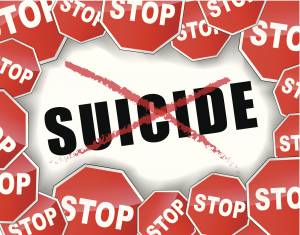In 2011, CBCNews estimated that by 2031, almost one-quarter of the population in Canada would be aged 65 or older. Today, about seven percent of older adults have reported elder abuse, either emotional or financial, by their caregivers. Even worse, the rate of police-reported violence is increasing. It’s not just friends or family who take advantage of these vulnerable individuals; professional caregivers have been involved in elder abuse, too.
June 15, 2016, marked the 10th anniversary of the World Elder Abuse Awareness Day. This day was sponsored by the United Nations, World Health Organization and International Network for the Prevention of Elder Abuse. It’s not just a problem in our country, but internationally. However, there are some things that you can do to protect your family and friends, and even yourself, from being a victim.
Abuse takes many forms. Here are some of the red flags that indicate a senior might be experiencing abuse:
- Lack of hygiene, food, drink or clothing
- Not having medical aids such as glasses or a walker
- Untreated injuries
- Inadequate facilities in the home
- A vulnerable adult signs a new will or other legal document
- Unexplained fractures, bruises, sores or welts
- An unexplained sexually transmitted disease
- Elder adult is isolated
- Elderly adult changes behavior suddenly
Sometimes, with elderly adults, it’s difficult to know if they’re experiencing abuse or are simply experiencing more problems of aging. Abuse victims of all ages already find it hard to tell people that they are in a bad situation. This is why it’s important to go see your family members and friends who are older. Talk to them on a regular basis and listen to them.
7 Things You Can Do to Prevent Elder Abuse
- Know the signs of elder abuse and neglect.
- Visit your elderly loved ones and ask them how they are doing.
- Give caregivers a respite to keep them from being stressed.
- Contact the seniors’ helpline in your province or territory if you see an at-risk elder who needs help that is beyond your authority.
- Do your part to bring awareness to the problem. Write letters to the editor of your newspaper or TV station to ask for coverage.
- Talk to your family about elder abuse.
- Fund-raise for elder services in your community.
Elder abuse isn’t limited to individuals who live in a nursing home. It happens everywhere. People who live in their own home can be victims, as can those who are in the hospital or in assisted living. It’s thought that abuse of elders is more often perpetuated by the victim’s own family members. Some of the research suggests that elder abuse is not reported or not identified, which means it never comes to the attention of the authorities.
Impact of Elder Abuse
When a person is a victim of elder abuse, it often compounds health problems they may already have. Abuse also increases the decline in mental health, which is often a significant problem with older adults who are dealing with dementia. In the United States, the cost of financial abuse is estimated at more than $2.6 billion dollars each year. Physical and emotional abuse increase healthcare costs.
When a person experiences elder abuse, he or she becomes more dependent on other caregivers. This puts more stress on those caregivers, who will also experience a decline in physical and mental health as they take on the burden of caring for another person. Elder abuse doesn’t just affect one or two people in the family; it affects society. Everyone should be aware of elder abuse and protect their loved ones who are vulnerable. One of the most beneficial intervention and prevention methods against elder abuse is social support from the community. We can’t rely on the police or social services to take care of our elders.




